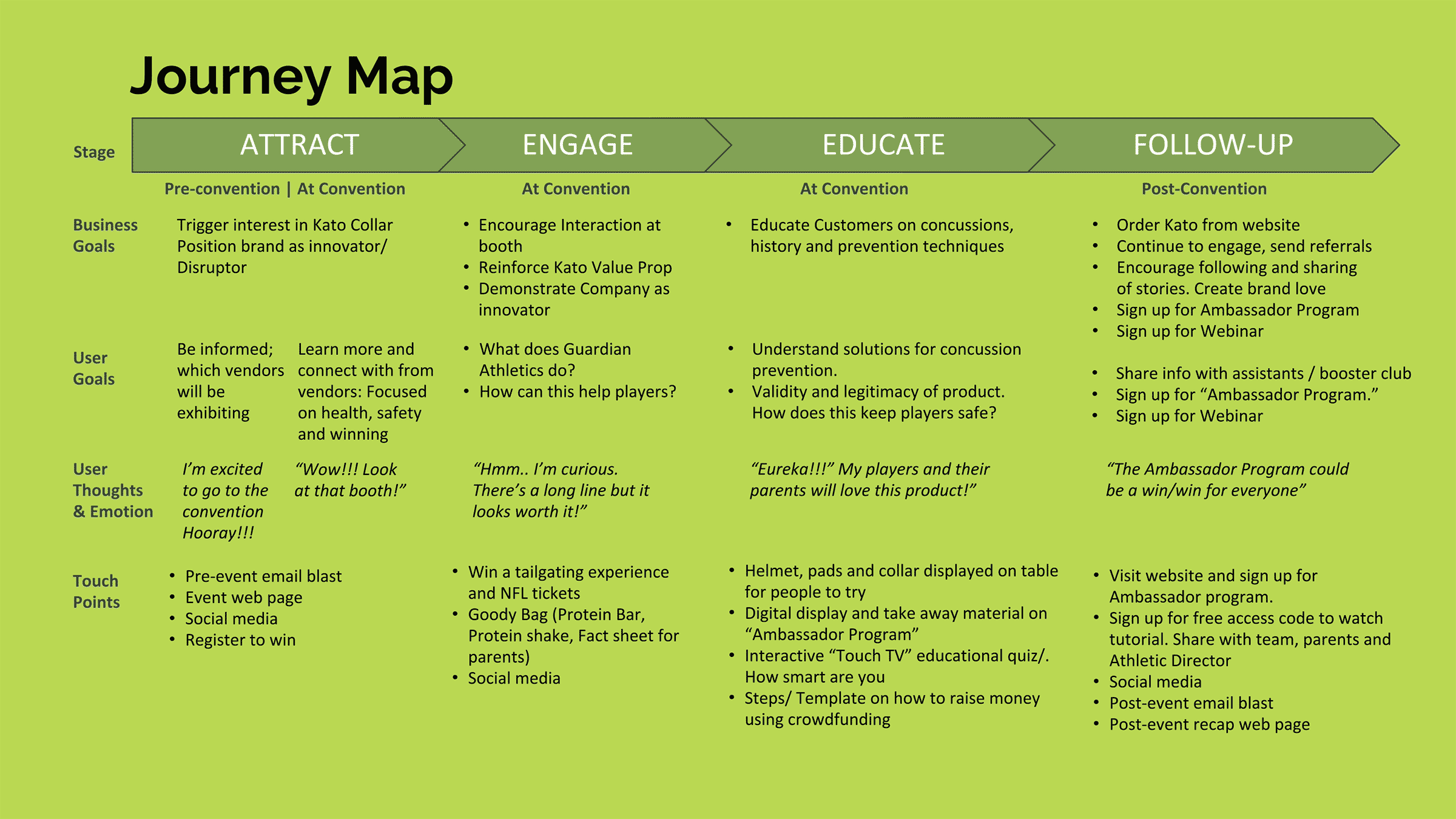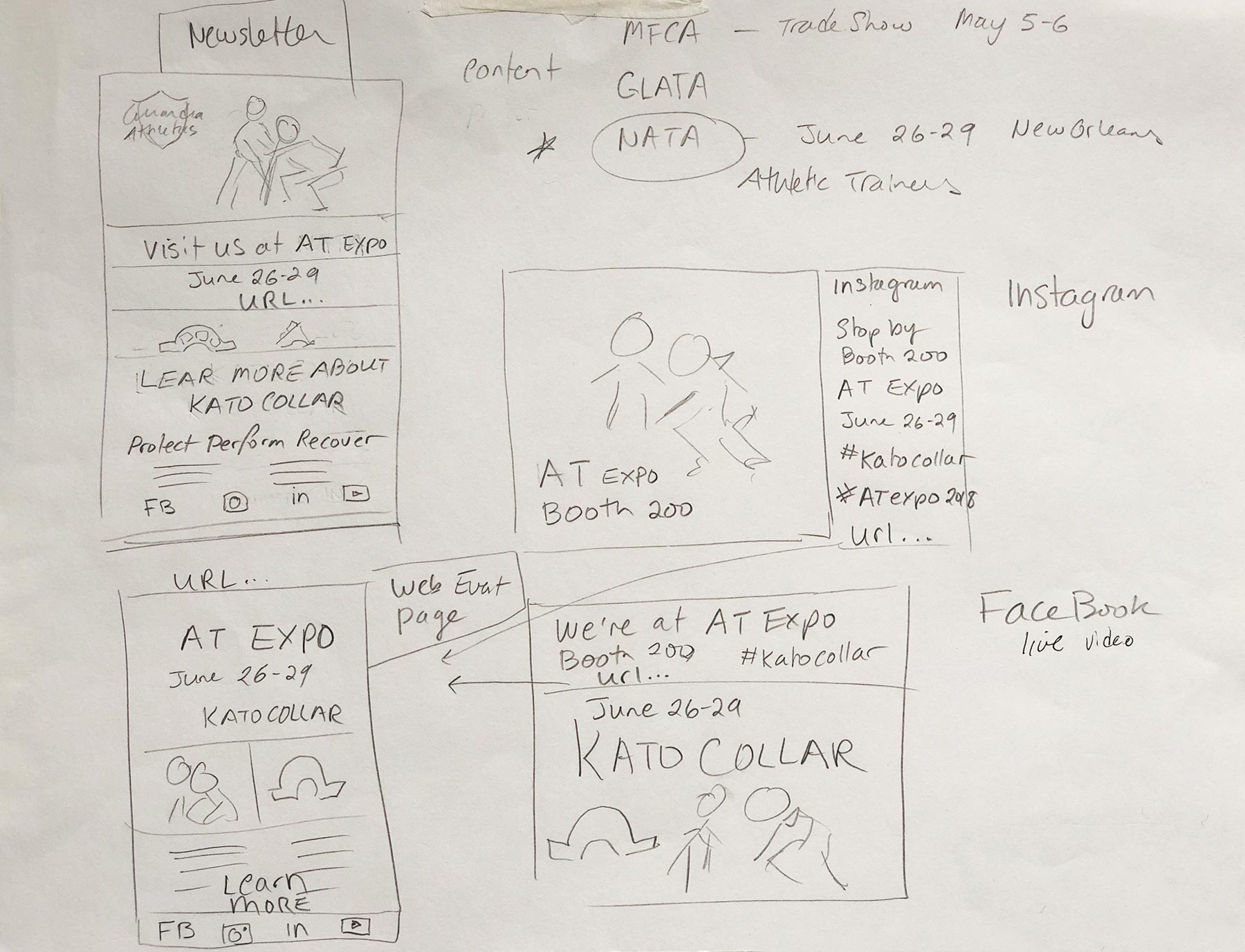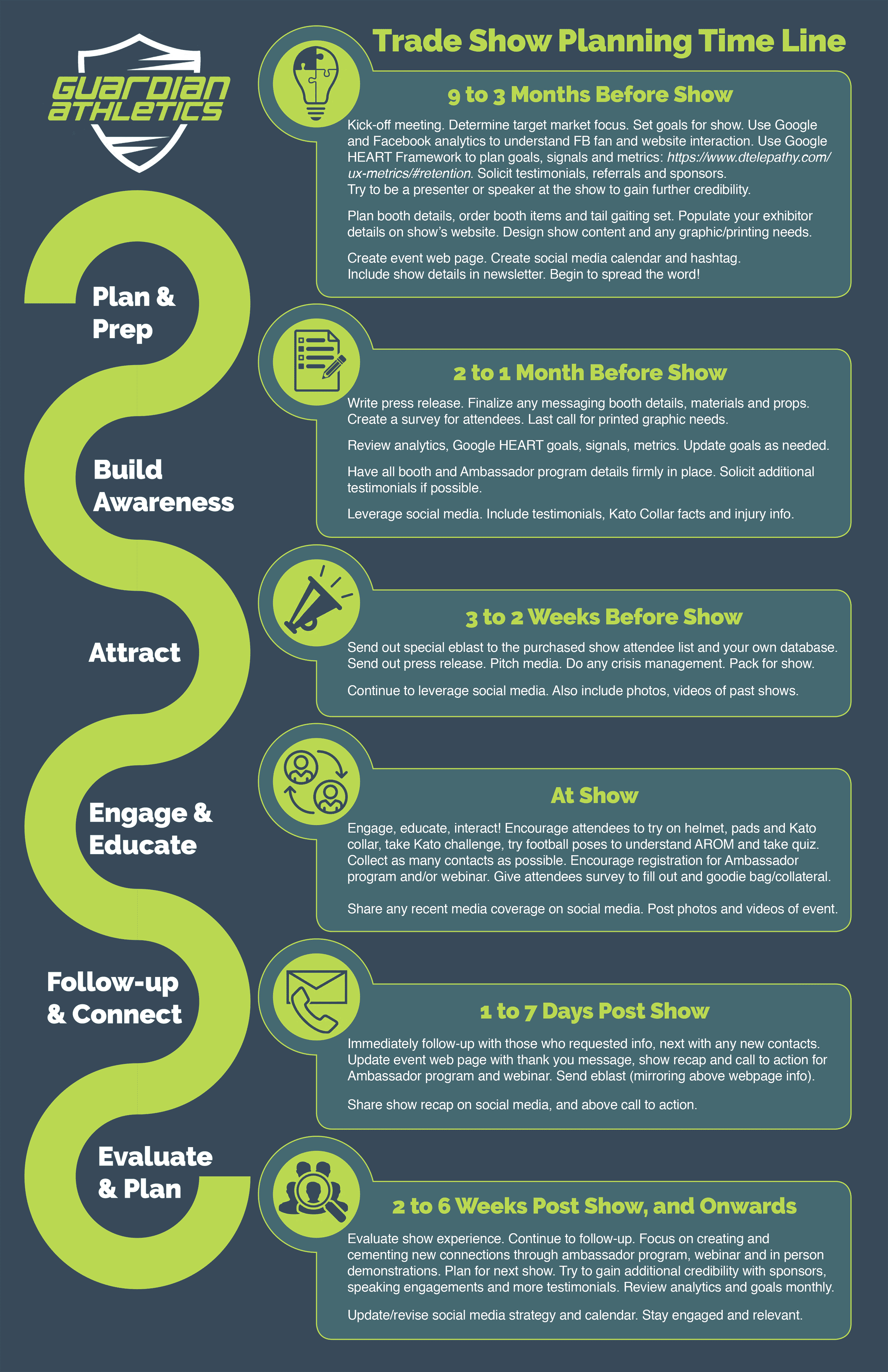GUARDIAN ATHLETICS:
let them play
multi-touchpoint design
Football head and neck injuries can have serious, long-term health consequences. There is real fear surrounding this. Youth participation is dropping because of it. What if there was a way to prevent injuries and slow down head movement by 30% after impact? What if this product already exists but is surrounded by skepticism? How might we strip away that bias?
THE CHALLENGE
Guardian Athletics’ Kato Collar is an innovative product that helps keep players safe in the game by decelerating the head by up to 30% after an impact. This helps prevent concussions, burners, stingers and other injuries.
Our challenge was to design a multi-touchpoint trade show experience to end “collar stigma” by promoting Kato Collar’s innovative design. Our team would do this by crafting better ways to attract, engage, educate and follow-up with trade-show attendees.
The Kato Collar is unique because it is discrete, lightweight and effective, yet allows a full range of motion. When a player’s shoulders are engaged, the Kato Collar rises to protect the neck.
Football collars and neck rolls have been unpopular and have a history of promising more than they deliver due to ineffective safety or preventing range of motion.
Football players wearing Kato Collars. Kato Collar with pads.
“The fear of concussions and other head injuries is preventing athletes of all ages from playing a game they love — football … So let’s protect our players, protect the game and let them play.”
— Guardian Athletics.
THE SOLUTION
Conquer the collar stigma! Our team designed an immersive, multi-touchpoint trade show experience for Guardian Athletics, targeting trade shows such as NATA Athletic Trainers Expo. Our touchpoints focus on social media, gamification and self discovery stations at the booth to attract, engage and educate attendees. We also created strategies to continue post-event follow-up engagement and education.
Our team used design-centered thinking and worked in an agile process to plan, discover, ideate, evaluate and prototype the solution.
Methods Used
Stakeholder Kickoff meeting
Deep Dive Research
Competitive Analysis
Affinity Diagraming & Synthesis
Journey Mapping
Storyboarding
Rapid Prototyping
High Fidelity Wireframes & Mock-ups
My Role
UX Research & Synthesis
UX Strategy
Marketing Strategy
Visual Design
Prototyping
Road Map Implementation
Tools Used
Whiteboards
Paper, Pen & Pencil
MURAL (web-based visual collaboration)
Adobe Illustrator, InDesign, Photoshop
Google Docs, Sheets & Slides
Quicktime
OUR APPROACH
Deep Dive Research and Learning
We began with the stakeholder kickoff meeting to identify Guardian Athletics’ goals, their current trade show process: what is and what isn’t working.
We did a deep dive into football head and neck injuries, collar history and stigma surrounding collars and neck rolls and researched competitive collar products. We used affinity diagraming to compile our research, brainstorm and identity opportunities and explore strategies.
Guardian Athletics’ target audience:
Enthusiastic fans, parents and families.
Football coaches and trainers.
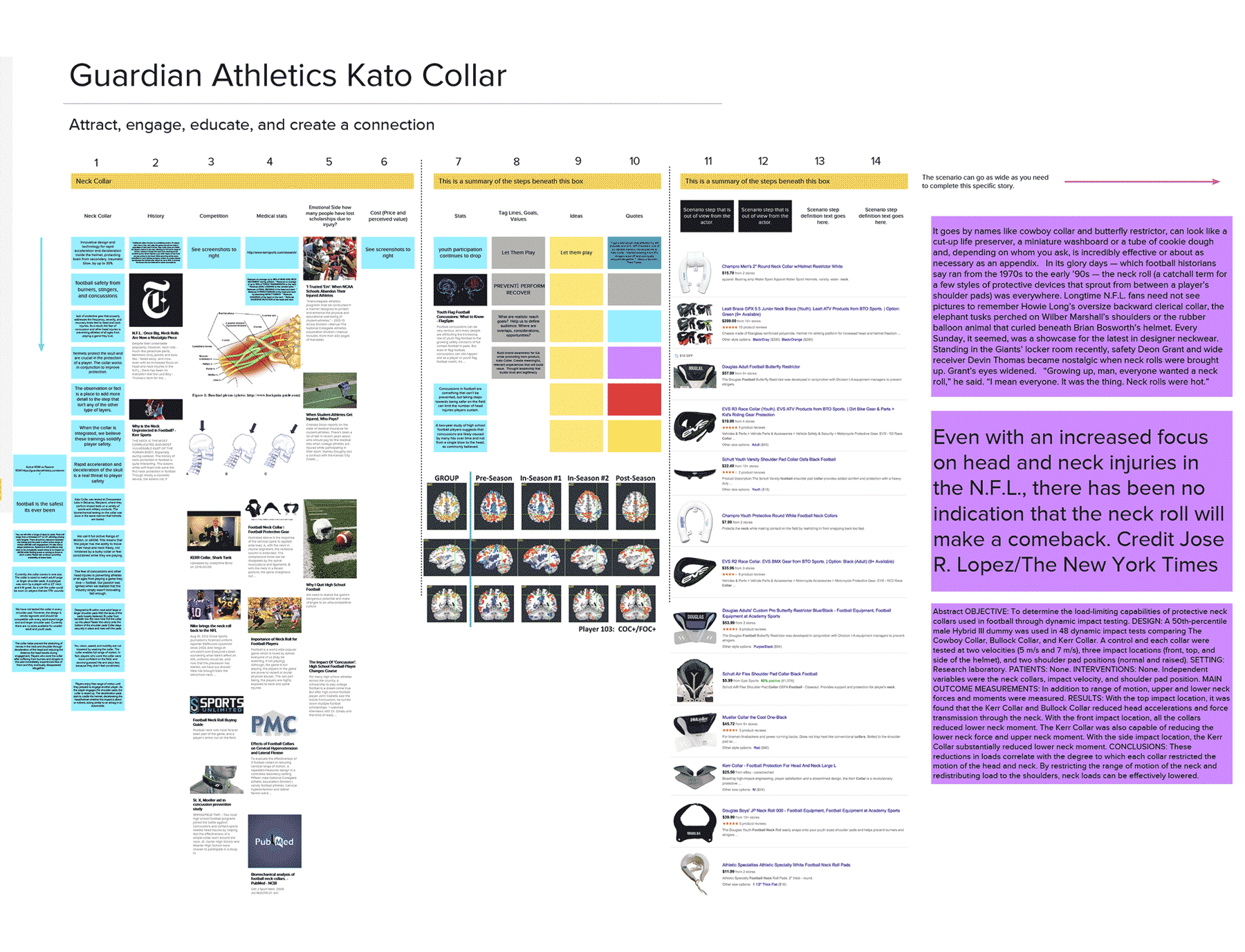
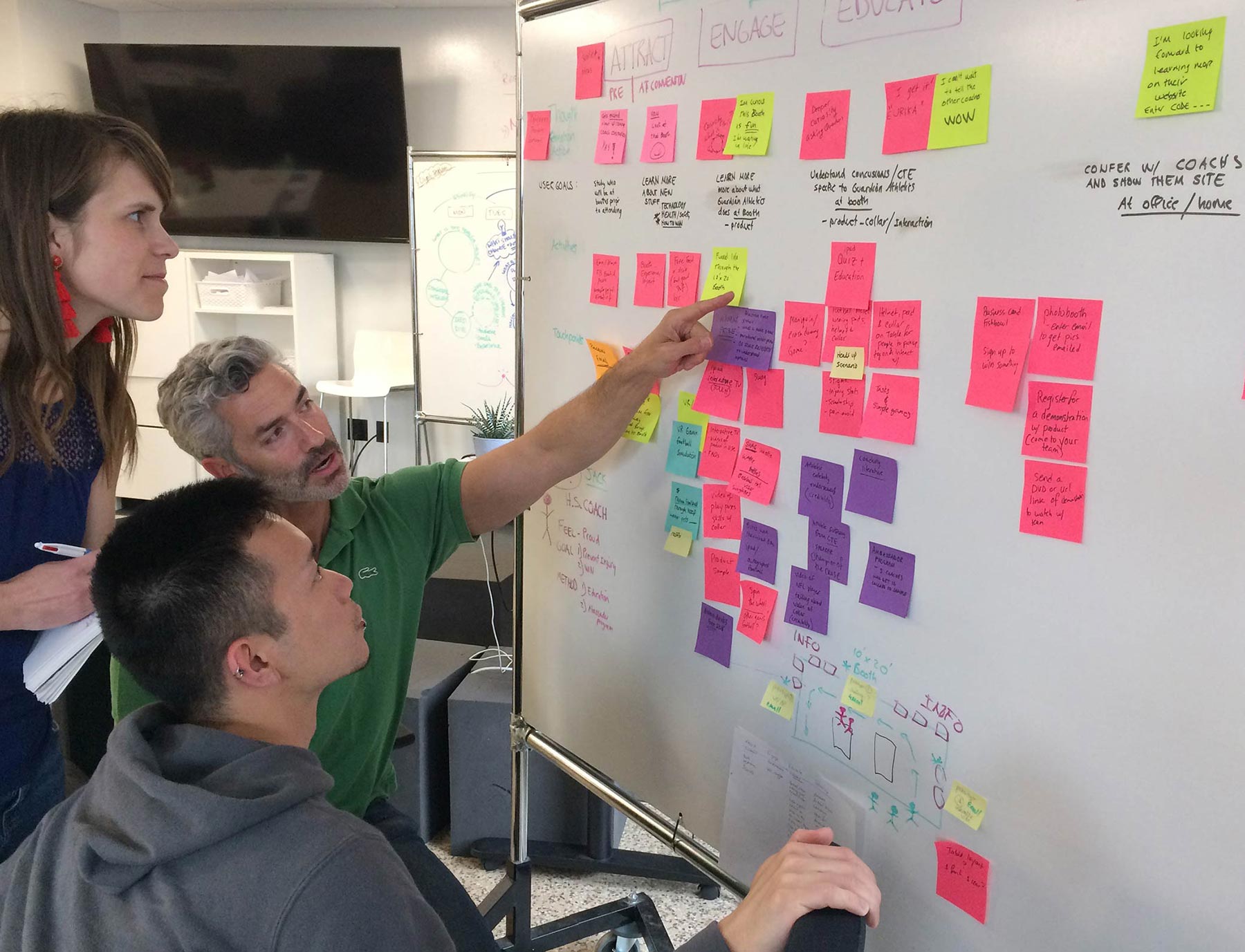

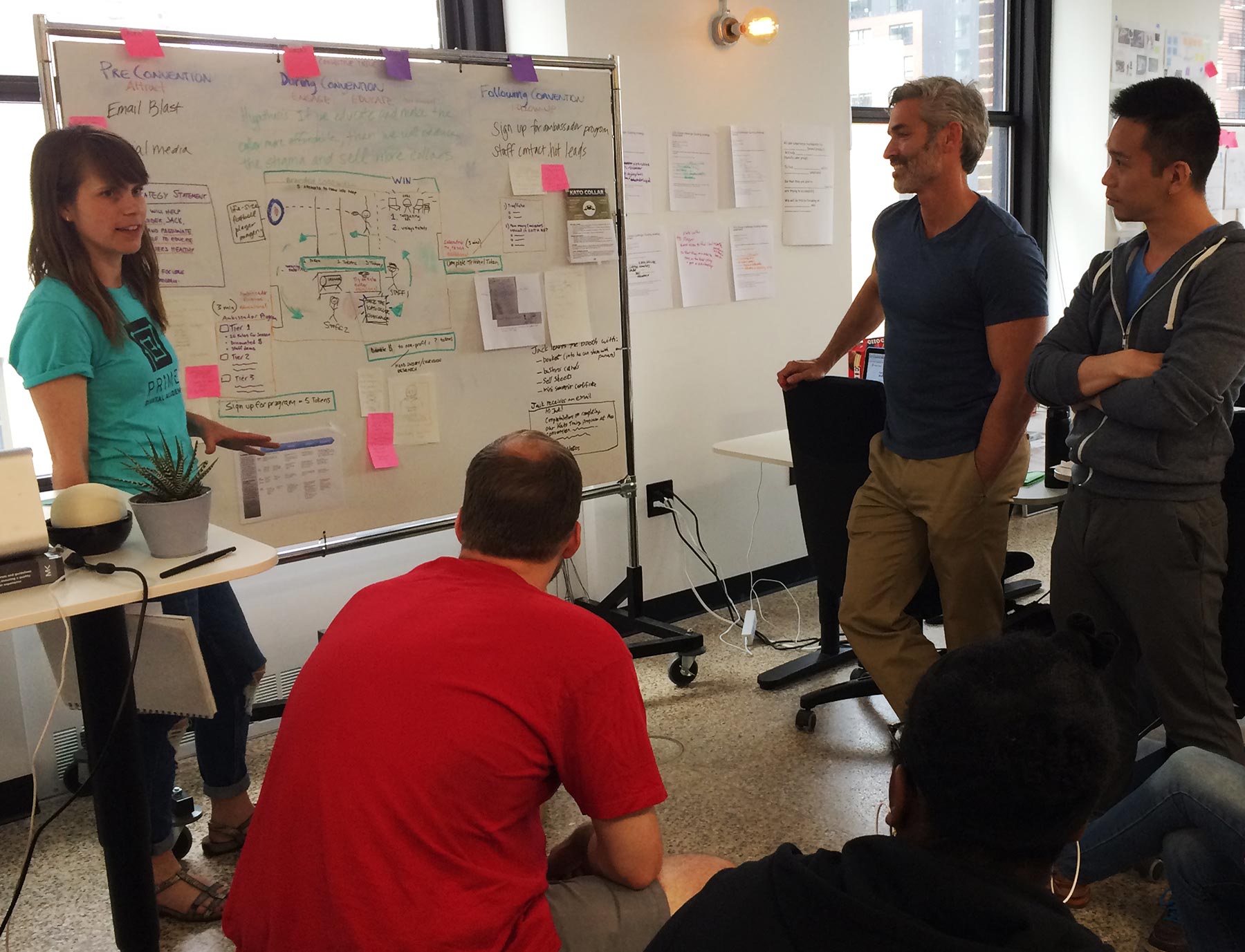
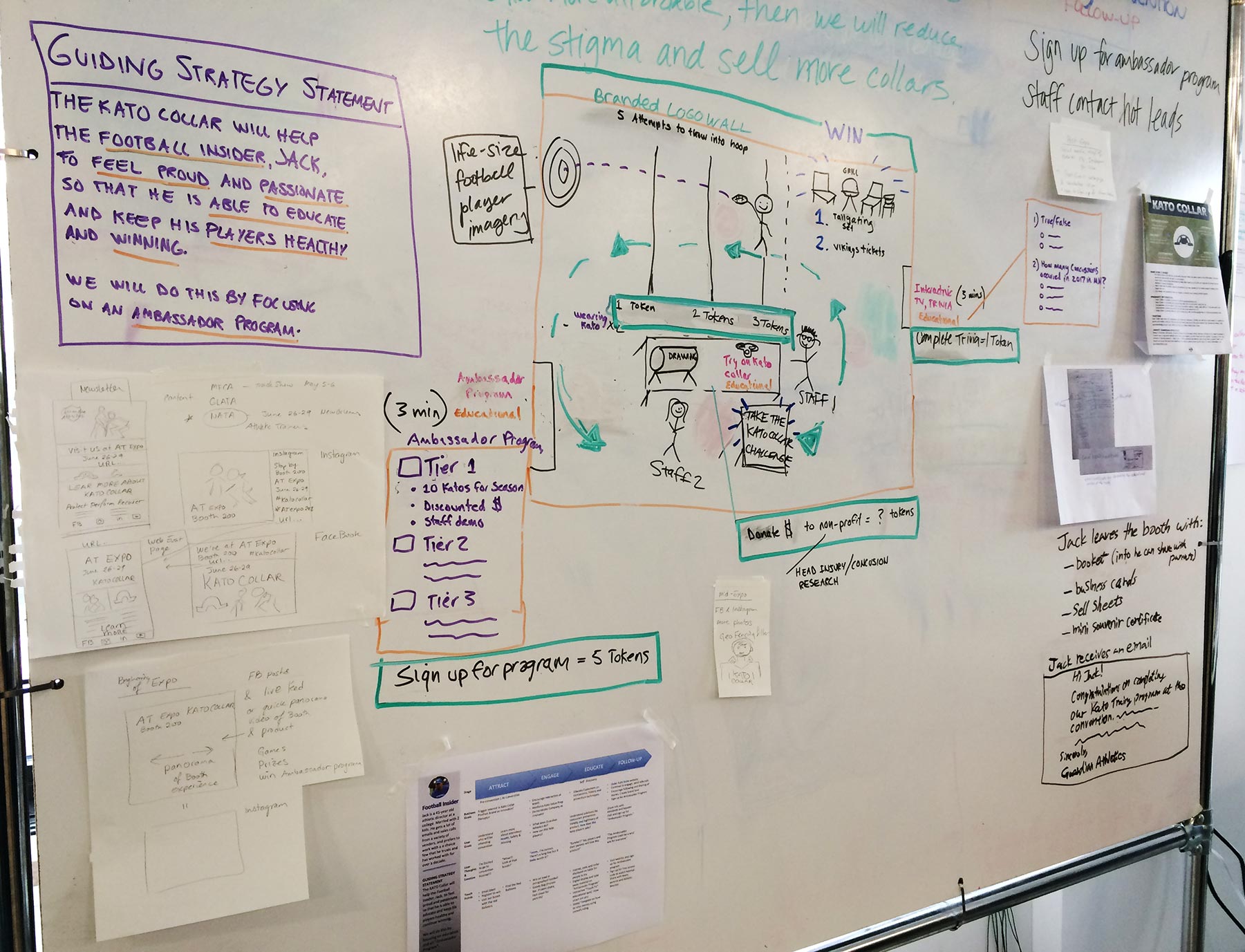
Strategy
Each of us presented our findings and ideas. Together we developed a value proposition statement, goals and a trade show strategy.
Journey Map
We created a journey map to help define, capture and achieve business and user goals through each touchpoint of the experience.
Persona Development
We targeted a football coach as our main persona. His goal is the keep his players educated and injury-free so they can continue to win on and off the field.
Multi-touchpoint journey map.
Defining goals and our coach persona.
Attract and Engage
I created sketches and high-fidelity prototype mock-ups for effective promotional marketing. I used Guardian Athletics’ style guide and assets to promote brand continuity and brand recognition.
Eblast to inform people about the upcoming trade show.
Trade show event webpage on Guardian Athletics’ website to provide details.
Social media posts prior to the show and during the show.
Sketches I created to explore trade show promotion: eblast, event webpage and social media posts.
High fidelity pre-trade show promotion: eblast, event webpage and social media posts.
Follow-up
I also created sketches and high-fidelity prototype mock-ups for post event marketing.
Eblast to thank attendees and a recap of the booth experience and Guardian Athletics’ message.
Trade show post-event webpage on Guardian Athletics’ website to recap and highlight event details plus information promoting their next event.
Social media posts thanking attendees and showcasing the booth experience.
High fidelity post-trade show messaging: eblast, event webpage and social media posts.
I created an infographic style strategic implementation time line (below) using Adobe Illustrator and InDesign for Guardian Athletics to follow and refer to as they strategize and prepare for upcoming trade shows.
KEY TAKEAWAYS
Though football is the safest it has ever been, head and neck injuries still happen frequently and need to be prevented. Parents often think twice before letting their youth play.
The Kato Collar is a huge step forward to preventing and minimizing injuries with proven science and testing.
Collar stigma is real. Much work needs to be done to reverse bias.



